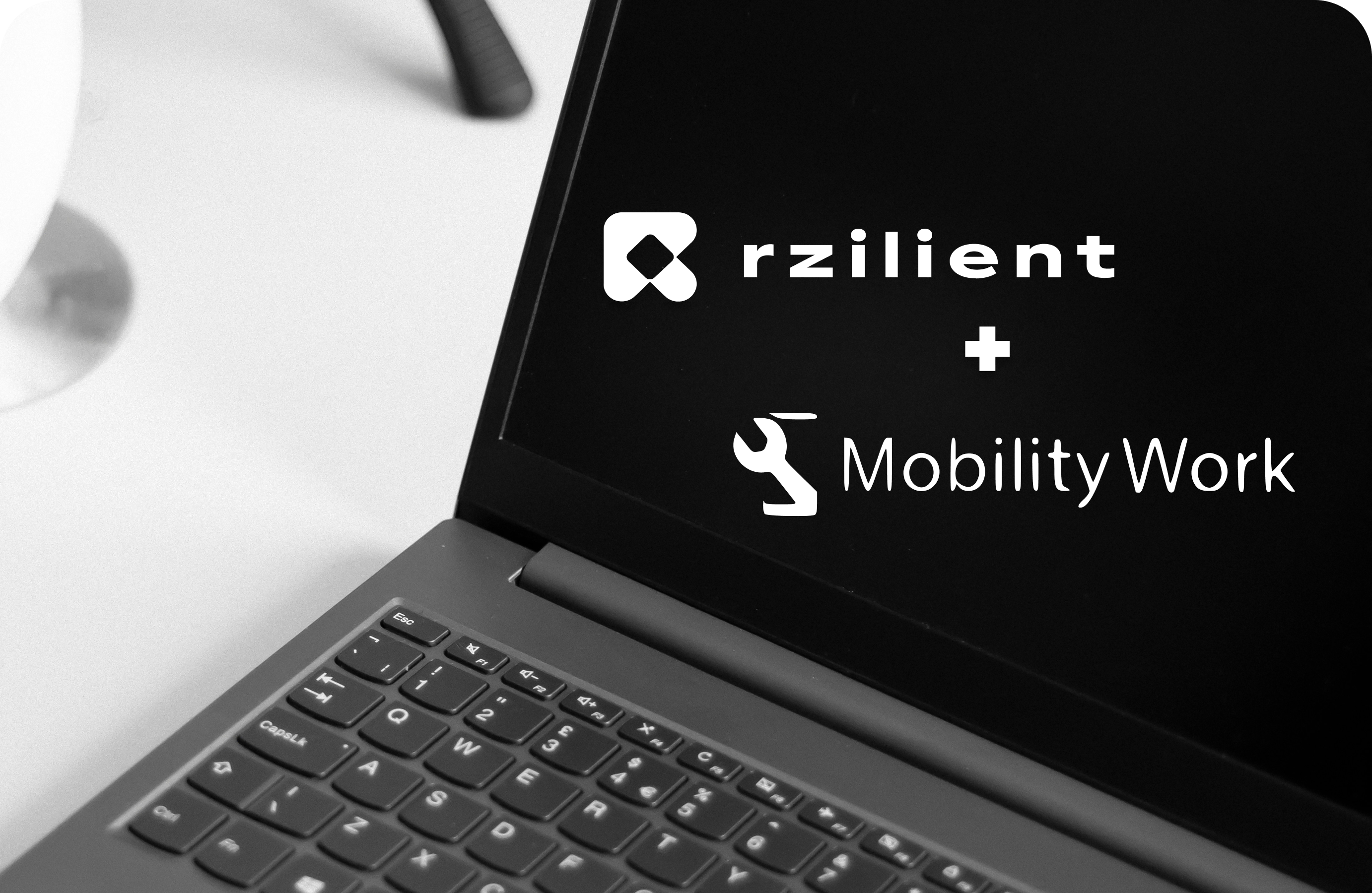Les impacts du BYOD sur votre activité professionnelle

Découvrez notre solution tout-en-un
Vos salariés utilisent-ils leur propre équipement informatique dans le cadre de leur travail pour votre entreprise ?
Si c’est le cas, vous pratiquez le BYOD !
Comme nous allons le voir, cette pratique, dont l’acronyme anglais est “Bring your own device”, se développe fortement depuis plusieurs années. Il s’agit d’une véritable tendance de fond, qui s’accompagne d’avantages et d’inconvénients pour votre entreprise.
Signe de cette diffusion de la pratique, selon une étude américaine, plus de 70% des responsables informatiques approuvent du BYOD et pour 96% des répondants, l’utilisation d’ordinateurs personnels est en augmentation dans le cadre professionnel.
C’est parti pour un parcours du concept et de ses implications concrètes pour votre entreprise !

Définition et origines du concept de BYOD
Définition du BYOD
La stratégie du BYOD consiste à tolérer, ou à encourager, le fait que les salariés d’une organisation utilisent leurs propres appareils électroniques personnels (smartphones, tablettes ou ordinateurs portables), dans le but d’effectuer des tâches professionnelles, plutôt que d’utiliser les appareils fournis par l'entreprise.
En français, le concept se traduit par « Apportez Votre Equipement personnel de Communication » (ou AVEC).
POCE et CEPO, kézako ?
D’autres notions proches sont liées au BYOD et permettent de préciser les choses :
- Personally owned, company enabled (POCE) : ici, le salarié utilise son propre matériel, mais ce dernier est géré par l’entreprise sur un plan logiciel et de sécurité ;
- Corporate-owned, personally enabled (COPE) : dans ce cas, c’est le système inverse : l’entreprise possède le matériel et le met à la disposition du salarié. Ce dernier est chargé d’y installer les logiciels nécessaires pour son travail.
Les origines et l’histoire du concept
Le concept du BYOD est assez récent.
Utilisé pour la première fois en 2004, il ne se fait connaître du grand public qu’en 2009, lorsque le géant Intel en parle pour décrire la tendance à l'œuvre au sein de ses propres équipes.
Petite anecdote amusante : BYOD est un jeu de mots basé sur l’acronyme BYOB, datant des années 1970, qui signifie “Bring Your Own Beer” (Apportez votre propre bière) et qui s’applique davantage aux fêtes étudiantes qu’au contexte professionnel 🙂
Quels sont les avantages et inconvénients du Bring Your Own Device ?
Les avantages du BYOD
En tant qu’employeur, en déployant une politique pro-BYOD, vous donnez une image positive et attractive à vos équipes et aux candidats au recrutement. Cela améliore donc votre marque employeur.
Le BYOD serait également un facteur positif pour la productivité, car vos salariés travaillent sur leurs propres machines et ne subissent donc pas de pertes de temps liées à la prise en main des équipements fournis par votre entreprise.
Notons aussi que le taux de renouvellement des matériels est en général plus élevé en BYOD, car les entreprises ont des cycles de renouvellement plus longs que les salariés. Votre entreprise bénéficie donc d’équipements plus récents.
Le BYOD s’accompagne aussi d’une véritable réduction des coûts, car votre entreprise n’a tout simplement pas besoin d’acheter du matériel informatique !
Et si, comme l’équipe de Rzilient, vous êtes engagés pour l’avenir de notre planète, sachez que le BYOD s’intègre parfaitement à une démarche de Green IT.
En effet, il permet une réduction de l’empreinte numérique de votre entreprise, en évitant la duplication du parc informatique. En effet, vos salariés possèdent déjà (dans l’écrasante majorité des cas) un équipement informatique parfaitement adapté à leurs besoins professionnels.
Du côté du salarié, le BYOD apporte aussi un avantage financier (et donc un boost de motivation), car les entreprises offrent le plus souvent une compensation financière pour l’utilisation du matériel personnel.
Les inconvénients du BYOD
Ces avantages ne doivent pas vous faire perdre de vue l’existence d’inconvénients au BYOD. Les anticiper permet d’éviter de sérieux problèmes !
Tout d’abord, le BYOD ouvre la porte à des problèmes de cybersécurité.
Des pertes et vols de données sensibles peuvent survenir plus facilement, du fait que le salarié applique en général des mesures de sécurité moins performantes que celles préconisées par les experts en cybersécurité.
Des erreurs peuvent également être commises, en particulier si des proches (les membres de la famille, par exemple) utilisent le matériel, ou encore dans le cas où le salarié revend son équipement informatique, en oubliant d’y supprimer les accès et données.
Pour mieux maîtriser ces risques, découvrez notre article sur les meilleures pratiques liées au déprovisionnement lors de l’offboarding ! 👇

Un autre inconvénient à avoir à l’esprit concerne les smartphones et les numéros de téléphone qui y sont associés.
Lors du départ du salarié de votre entreprise, celui-ci concerne en général son numéro de téléphone et cela peut être problématique, en particulier pour certaines fonctions : managers, commerciaux, etc. Le suivi des prospects et des clients devient plus difficile dans ce contexte !
Citons également les inconvénients du BYOD à l’échelle de l’organisation, en termes de gestion des équipements :
- Faible adaptabilité du parc informatique ;
- Scalabilité inexistante ;
- Manque d’uniformisation et de standardisation des équipements et de logiciels installés. Le service informatique de l’entreprise se retrouve à devoir gérer une grande variété de configurations différentes, source de perte de temps et génératrice de coûts.
Un dernier inconvénient consiste en la compensation financière du salarié pour l’utilisation de ses équipements personnels. La loi française n’impose rien, mais il est couramment pratiqué de compenser le salarié.
.webp)
Les bonnes pratiques en lien avec le BYOD
La sécurisation de vos données
Afin de vous assurer que les données sensibles de votre entreprise ne soient pas mises en péril dans le cas d’une tolérance ou d’un encouragement du BYOD, voici quelques pratiques importantes à mettre en oeuvre :
- Mise en place d'une politique de sécurité solide ;
- Chiffrement systématique des données ;
- Utilisation de logiciels de sécurité (antivirus) sur l’ensemble des machines ;
- Bonne gestion du déprovisionnement, lors du départ du salarié.
Pour aller plus loin, consultez les bonnes pratiques BYOD préconisées par la CNIL.
La mise en place d’une politique interne dédiée au BYOD
L’adoption par vos équipes des bonnes pratiques passe aussi par des actions concrètes :
- Communication claire et efficace aux salariés sur les pratiques à adopter ;
- Actions régulières de formation et de sensibilisation ;
- Évaluation régulière de la politique de BYOD, dans une démarche d’amélioration continue.
Le BYOD est incontournable. Bien le gérer est possible !
Nous l’avons vu, le BYOD peut rendre votre entreprise plus attractive, plus productive et vous aider à réaliser des économies importantes, tout en participant à la transition écologique. Comment résister ? 🙂
N’oublions pas toutefois que cette stratégie s’accompagne aussi de vrais risques.
Nous vous aidons à maîtriser le BYOD et en tirer profit, grâce aux processus dédiés de notre plateforme d’infogérance Rzilient.
.png)






